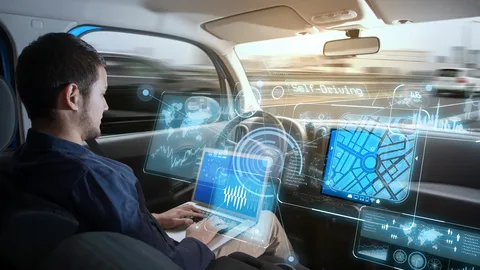I. Introduction
Autonomous vehicles, a groundbreaking innovation in the realm of transportation, refer to vehicles capable of navigating and operating without human intervention. The journey of autonomous vehicles traces back to their conceptualization, with each phase marking significant advancements. In this article, we explore the challenges and opportunities that shape the future of autonomous vehicles.
II. Challenges in Autonomous Vehicles
- Technological Limitations
One of the primary hurdles in autonomous vehicle development lies in technological constraints. Achieving a seamless and foolproof autonomous system demands cutting-edge technology, often a challenge due to the rapid pace of technological evolution.
- Regulatory and Legal Hurdles
The deployment of autonomous vehicles faces a myriad of regulatory and legal challenges. Questions about liability, insurance, and adherence to existing traffic laws create complexities that need careful consideration and resolution.
- Ethical Dilemmas
Autonomous vehicles pose ethical dilemmas, such as determining how these vehicles should make split-second decisions in potential life-threatening scenarios. Addressing these moral challenges is essential for gaining public trust.
- Cybersecurity Concerns
The reliance on sophisticated technology makes autonomous vehicles vulnerable to cybersecurity threats. Protecting the vehicles’ systems from hacking and ensuring data privacy are paramount concerns.
III. Opportunities in Autonomous Vehicles
- Advancements in Technology
Despite challenges, ongoing technological advancements provide opportunities for enhancing the capabilities of autonomous vehicles. Improved sensors, advanced algorithms, and artificial intelligence (AI) contribute to overcoming technological hurdles.
- Economic Impacts
The autonomous vehicle industry presents vast economic opportunities. From job creation to the growth of related industries, the economic impact is significant, making it a focal point for investment and development.
- Environmental Benefits
Autonomous vehicles have the potential to revolutionize transportation’s environmental impact. Optimized routes, reduced traffic congestion, and improved fuel efficiency contribute to a greener and more sustainable future.
- Enhanced Safety Features
Autonomous vehicles boast advanced safety features, including real-time monitoring, instant response mechanisms, and the ability to predict potential hazards. These features contribute to a safer driving environment.
IV. Perplexity in Autonomous Vehicles Development
- Rapid Technological Changes
The dynamic nature of technology introduces perplexity into autonomous vehicle development. Staying abreast of constant innovations and ensuring seamless integration poses a challenge to developers.
- Public Perception and Acceptance
Public perception plays a crucial role in the success of autonomous vehicles. Overcoming skepticism and fostering public acceptance require strategic communication and education about the technology.
- Collaboration and Industry Partnerships
The complexity of autonomous vehicle development necessitates collaboration. Partnerships between tech companies, automotive manufacturers, and regulatory bodies are crucial for addressing multifaceted challenges.
V. Burstiness in Autonomous Vehicles Growth
- Market Expansion
The growth of the autonomous vehicle market is characterized by burstiness. Market expansions, fueled by increased consumer demand and technological breakthroughs, create opportunities for innovation and competition.
- Innovation and Research
The burst of innovation in autonomous vehicles is evident in continuous research efforts. Ongoing studies and experiments push the boundaries of what is possible, leading to breakthroughs that shape the industry’s future.
- Integration with Smart Cities
Autonomous vehicles play a pivotal role in the development of smart cities. The burst of integration involves creating interconnected systems that enhance urban mobility and overall efficiency.
- Job Opportunities in the Industry
The growth of autonomous vehicles results in a burst of job opportunities. From software developers to safety analysts, the industry demands a diverse skill set, presenting a range of employment prospects.
VI. The Role of AI in Autonomous Vehicles
- Machine Learning Algorithms
Machine learning algorithms form the backbone of autonomous vehicle functionality. These algorithms enable vehicles to learn from real-world scenarios, enhancing their decision-making capabilities.
- Sensor Technologies
The burst of sensor technologies, including LiDAR and radar, provides autonomous vehicles with a comprehensive view of their surroundings. This burst in sensor capabilities contributes to enhanced safety and navigation.
- Real-time Decision Making
Autonomous vehicles rely on real-time decision-making capabilities, a burst of efficiency made possible by AI. Rapid processing of data and instant response mechanisms ensure the safety and reliability of autonomous systems.
- AI’s Contribution to Safety
AI’s contribution to safety is undeniable. The burst of AI-powered safety features includes collision avoidance systems, adaptive cruise control, and lane-keeping assistance, collectively making autonomous vehicles safer than traditional alternatives.
VII. Future Trends in Autonomous Vehicles
- Connected and Cooperative Systems
The future of autonomous vehicles lies in connected and cooperative systems. Vehicles communicating with each other and with smart infrastructure optimize traffic flow and enhance overall transportation efficiency.
- Autonomous Fleets
A burst in the concept of autonomous fleets is expected. Shared autonomous vehicles, operated by fleets rather than individual ownership, could revolutionize urban mobility, reducing congestion and environmental impact.
- Urban Mobility Solutions
Autonomous vehicles are set to play a pivotal role in urban mobility solutions. Bursting onto the scene with on-demand and efficient transportation options, they contribute to creating smarter and more accessible cities.
- Impact on Traditional Transportation
The future sees a potential burst in the transformation of traditional transportation. As autonomous vehicles become more prevalent, their impact on conventional modes of transport, from taxis to public transit, will be profound.
VIII. Conclusion
In conclusion, the future of autonomous vehicles is both challenging and promising. Addressing technological, regulatory, and ethical challenges is crucial, but the burst of opportunities in technology, economics, and safety signifies a transformative era in transportation.
IX. FAQs
- How safe are autonomous vehicles?
Autonomous vehicles prioritize safety through advanced technologies, making them potentially safer than traditional vehicles.
- What challenges do policymakers face in regulating autonomous vehicles?
Policymakers grapple with defining liability, privacy, and ethical standards, creating a challenging regulatory landscape.
- How do autonomous vehicles contribute to environmental sustainability?
By optimizing routes, reducing congestion, and improving fuel efficiency, autonomous vehicles play a key role in creating a more sustainable transportation ecosystem.
- Can autonomous vehicles eliminate the need for traditional transportation modes?
While they may transform transportation, complete elimination of traditional modes is unlikely, as both can coexist based on user preferences and specific use cases.
- What role does artificial intelligence play in enhancing the safety of autonomous vehicles?
Artificial intelligence enables real-time decision-making, adaptive safety features, and continuous learning, contributing significantly to the overall safety of autonomous vehicles.




